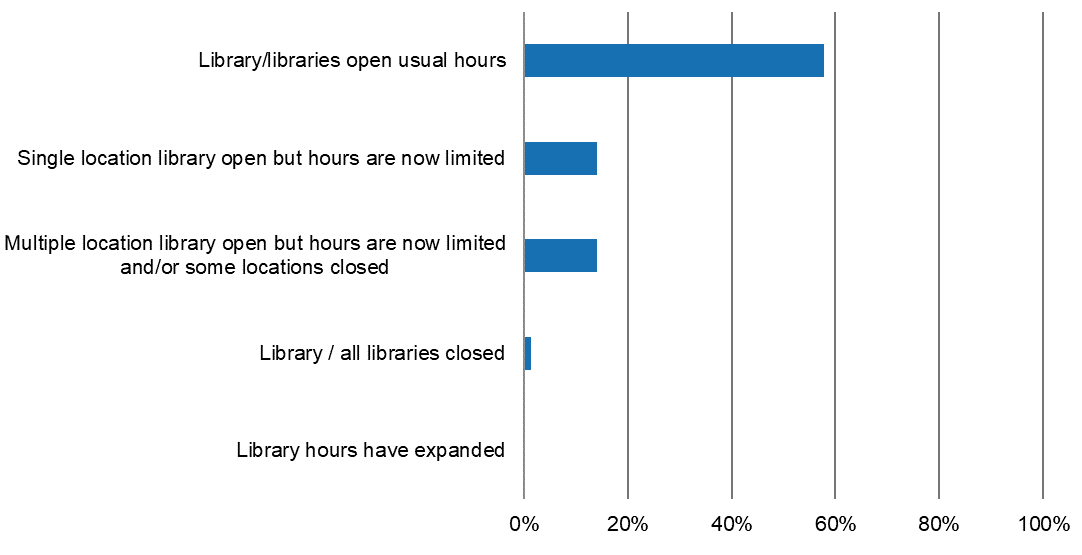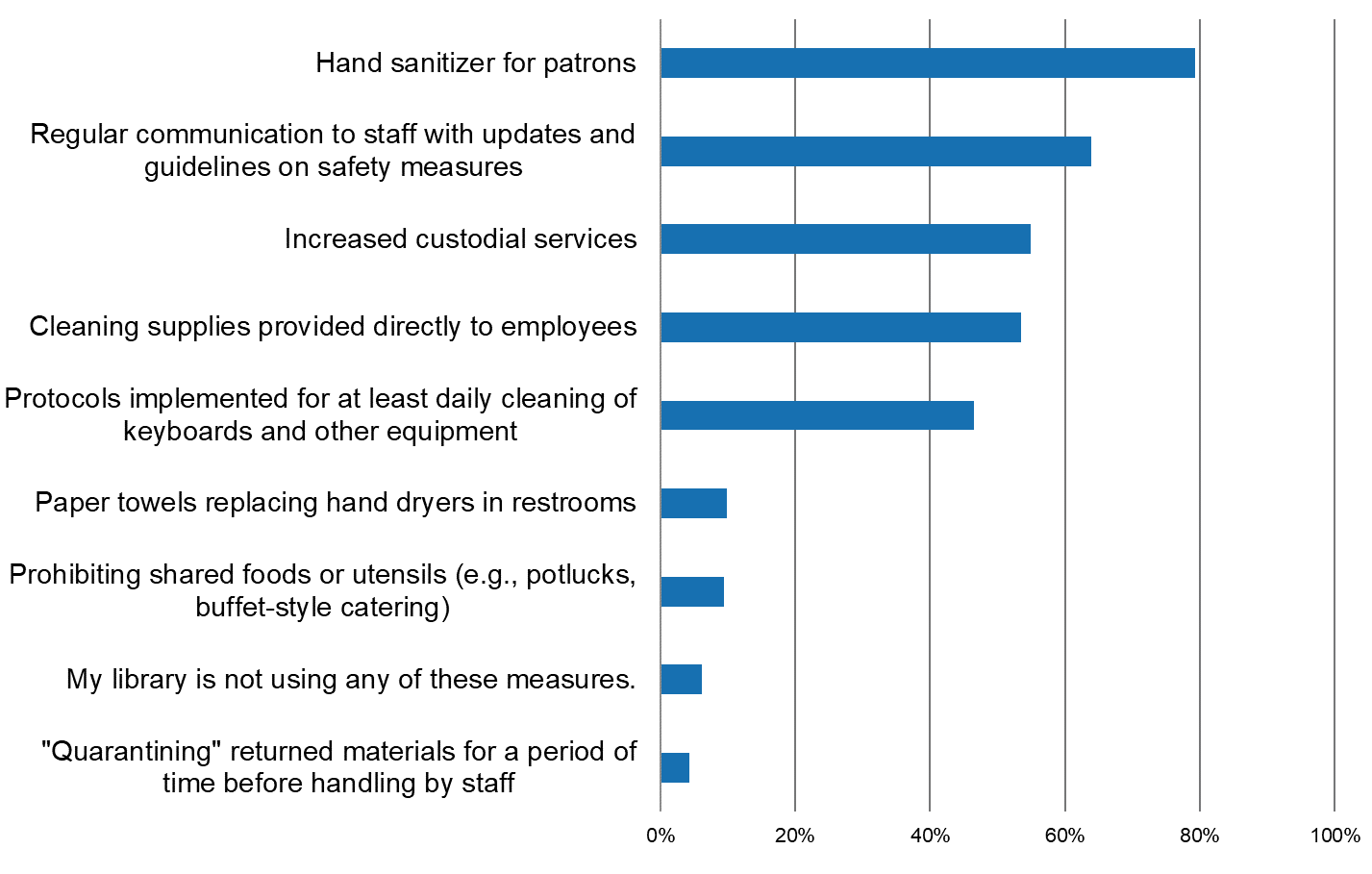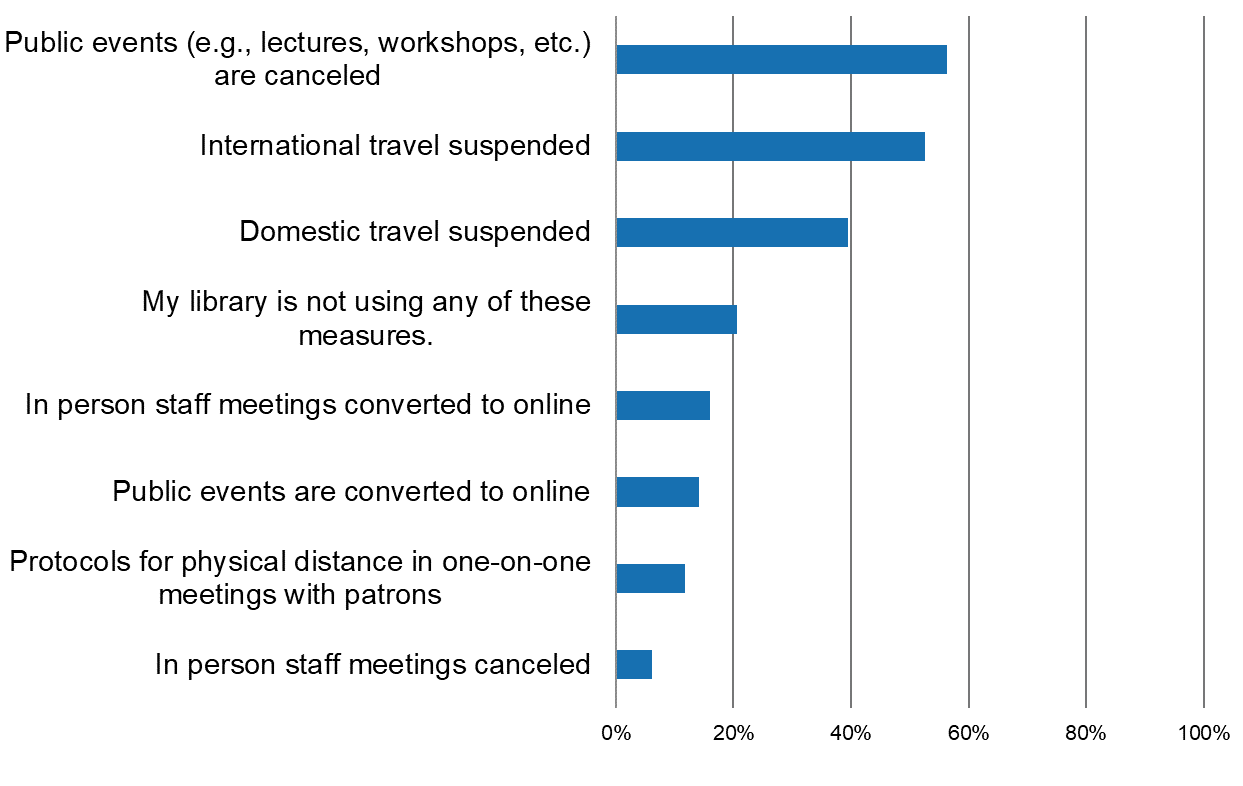Academic Library Response to COVID19
The First 24 Hours of Survey Data
For the most recent findings see First This, Now That: A Look at 10-Day Trends in Academic Library Response to COVID19
On Wednesday, March 11, at 8:00 pm ET, we deployed the “Academic Library Response to COVID19” survey in order to gather as-it-happens data from and for the academic library community. Today we are sharing a summary of the responses from the 213 libraries that responded in the first 24 hours.
We asked that people only submit information for their own library, so the unit of reporting and analysis is the institution. In other words, the frame is the status of the library (whether it is a single library or multiple) at a given institution, at a given point in time. While the questions were intentionally designed for response at the institutional level, we recognize that, as a result, the data present an overview and do not capture the details of differences within a given institution. We very much encourage libraries to submit updated survey responses as policies change over time. This summary presents only first-time responses.
Summary of Findings
Institutions have seen a significant shift from in-person to online course delivery. However, overall there is relatively little change in how libraries are serving their users at this point. Libraries are putting a range of prevention and mitigation measures in place, especially increased cleaning by library and custodial staff, providing hand sanitizer for patrons, and canceling public events. Somewhat surprisingly, only 64 percent indicate using the strategy of “regular communication to staff with updates and guidelines on safety measures.” The biggest change we found that libraries are making is with respect to remote work policies; 23 percent have expanded who may work remotely.
We are carefully monitoring the incoming results for the entire survey and are particularly looking to see if there is perhaps a time lag effect, with institutions making changes and then libraries instituting changes in the following days. Libraries that submit the survey and then provide updates will be particularly helpful for tracking this. We are grateful for any who are able to take the time to do so. We also anticipate shifting of in-person and patron access to online, phone, and mediated access, particularly if libraries shift to not only allowing but actually mandating remote work. In particular, we are monitoring technology lending, access to facilities, protocols for interacting one-on-one with patrons, and whether in-person meetings continue in libraries. Finally, though we have not analyzed the open-ended text entered with “other” responses, a quick review indicates that libraries are responding to a range of complexities and a great number of uncertainties.
Please have your library fill out the survey if it has not done so. It takes time, but on average respondents are able to complete the form in 5-10 minutes. If your library has filled out the survey and things evolve, please submit an update. We structured the survey to accommodate libraries submitting updates as often as they need to. The link to the survey with all of the questions on a single page is: https://surveys.ithaka.org/jfe/form/SV_8qN8F2274hMBBBz. The link is the same for taking the survey the first time and for submitting an update. You may also view a live results report as surveys are submitted at: https://ql.tc/aAaxhh.
Please note: because the results are updated live, they will not match the data reported here. The data here was extracted on March 12, 2020 at 8:00pm ET.
Status of institution
The majority of institutions within our sample (58 percent) have moved in-person classes to online/remote instruction, while a smaller but still substantial share (25 percent) are still offering all classes in their usual format. Many institutions are still permitting students to stay in residence (46 percent), though roughly a quarter (21 percent) are requiring students to vacate residential facilities (with certain exceptions permitted). Very few institutions (2 percent) are requiring students to vacate residential facilities with no exceptions permitted.
Building access
The majority of libraries are remaining open during usual hours (58 percent). In fact, when institutions are continuing classes in their normal format, all (100 percent) are being reported to remain open as well. When classes have moved entirely online, nearly a majority (43 percent) of libraries are still remaining open during their usual hours. Overall, roughly a quarter (28 percent) have either limited library building hours or closed specific library locations. The vast majority (71 percent) have not changed their policies to restrict general public access to library facilities.
What best describes the status of your library building hours?
Collection + technology access
Access to both technologies and print materials has largely remained unchanged. The vast majority of libraries reported no changes to their existing technology lending programs (80 percent) and access to print materials (85 percent). This is an area that we will be watching closely to examine change over time.
Services access
Likewise, reference services appear to be somewhat unaffected; for the majority of libraries (65 percent), reference services are continuing as usual (in-person, online, and/or via phone). Some (25 percent) are limiting hours available or pivoting to online/phone only. Library instruction has been relatively more affected; while many libraries (34 percent) are continuing to offer instruction in the modality of the course, an equal share (36 percent) are only providing synchronous instruction virtually. This may reflect the impact of campus courses moving online.
Prevention and mitigation measures
Many enhanced cleaning, disinfection, and safety measures are being implemented–in particular, hand sanitizer being provided to patrons (79 percent), increased custodial services (55 percent), cleaning supplies being provided directly to employees (54 percent), and protocols being implemented for at least daily cleaning of keyboards and other equipment (46 percent). While a large share (64 percent) report that regular communications are being shared with staff on updates and guidelines for safety measures, this means that these communications are not taking place at roughly one-third of libraries.
Is your library using any of the following enhanced cleaning, disinfection, or safety measures?
Staff travel is often being restricted both internationally (53 percent) and domestically (39 percent). Public events are frequently being cancelled (56 percent), while few are being converted to an online format (14 percent). Very few have reported that in-person staff meetings are being cancelled (6 percent) or converted to online (16 percent). Likewise, for one-on-one meetings with patrons, very few libraries are providing protocols for physical distancing (12 percent).
Is your library using any of the following social distancing measures?
Personnel
While for the majority of libraries, remote work policies have remained the same (66 percent), it is notable that roughly a quarter have expanded who may work remotely (23 percent). While respondents had an opportunity to expand on these responses in an open-text field to share more about how different employee groups have been impacted by these decisions, we have not yet analyzed these qualitative data.



Pingbacks
Academic Library Response to COVID19 | Trevor A. Dawes
Declaración de ALA sobre COVID-19
Statement from ALA Regarding COVID-19 – SJSU ALASC
Latest news on coronavirus and higher education | Studently
LIVE UPDATES: Latest news on coronavirus and higher education – Inside Higher Ed – Corona Virus News
Latest news on coronavirus and higher education - Ask Your Family Doc
LIVE UPDATES: Latest news on coronavirus and higher education – Inside Higher Ed – Coronavirus (COVID-19) World News & Prevention
Latest news on coronavirus and higher education - CORONA VIRUS
Latest news on coronavirus and higher education
Latest news on coronavirus and higher education – BNewsOne
Latest news on coronavirus and higher education – 123news
Reliable Sources in a Time of Plague | Reliable Source (This is a)
LIVE UPDATES: Latest news on coronavirus and higher education - Inside Higher Ed
Latest news on coronavirus and higher education – covid19edu
Comments
You should encourage all libraries to close during this time!